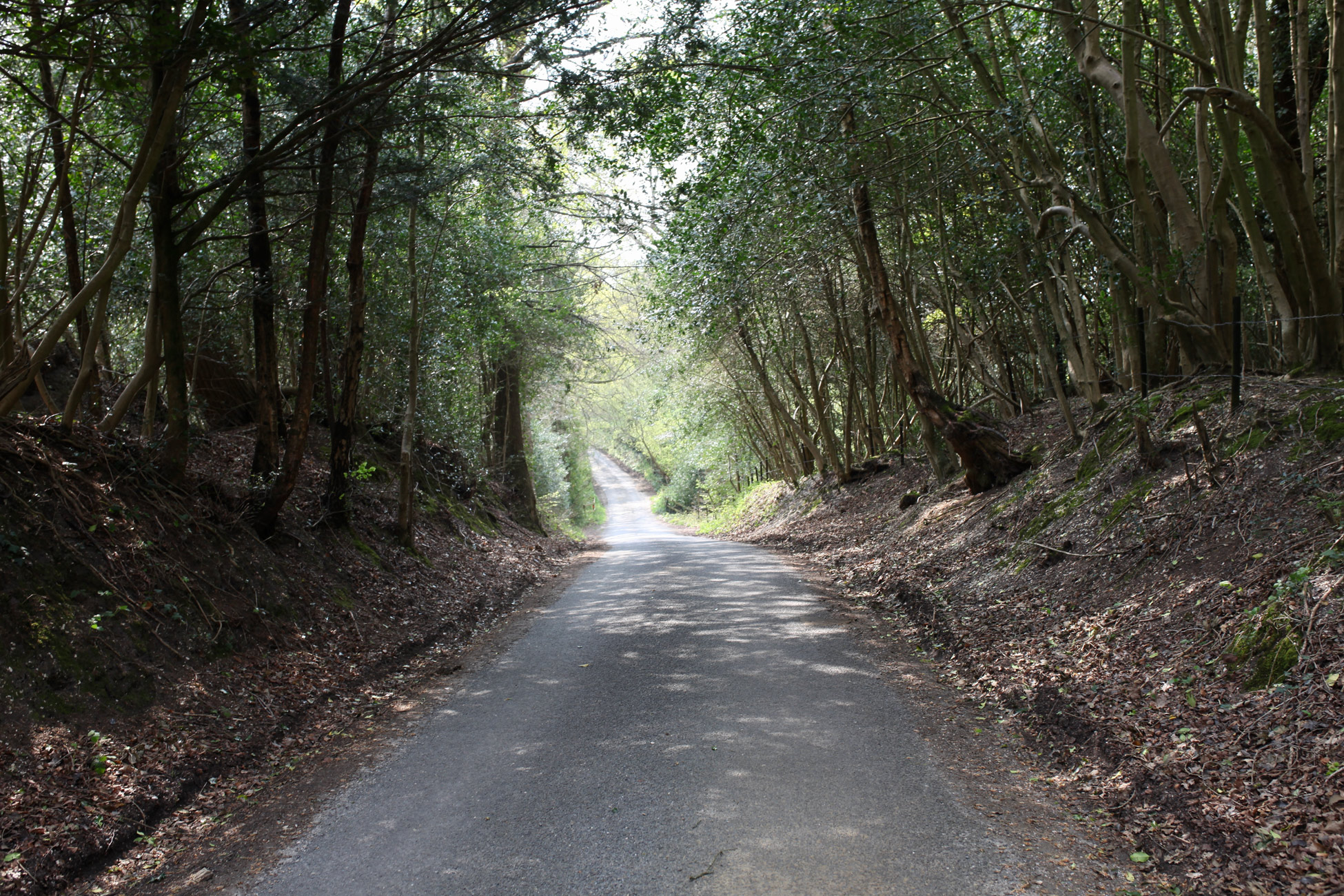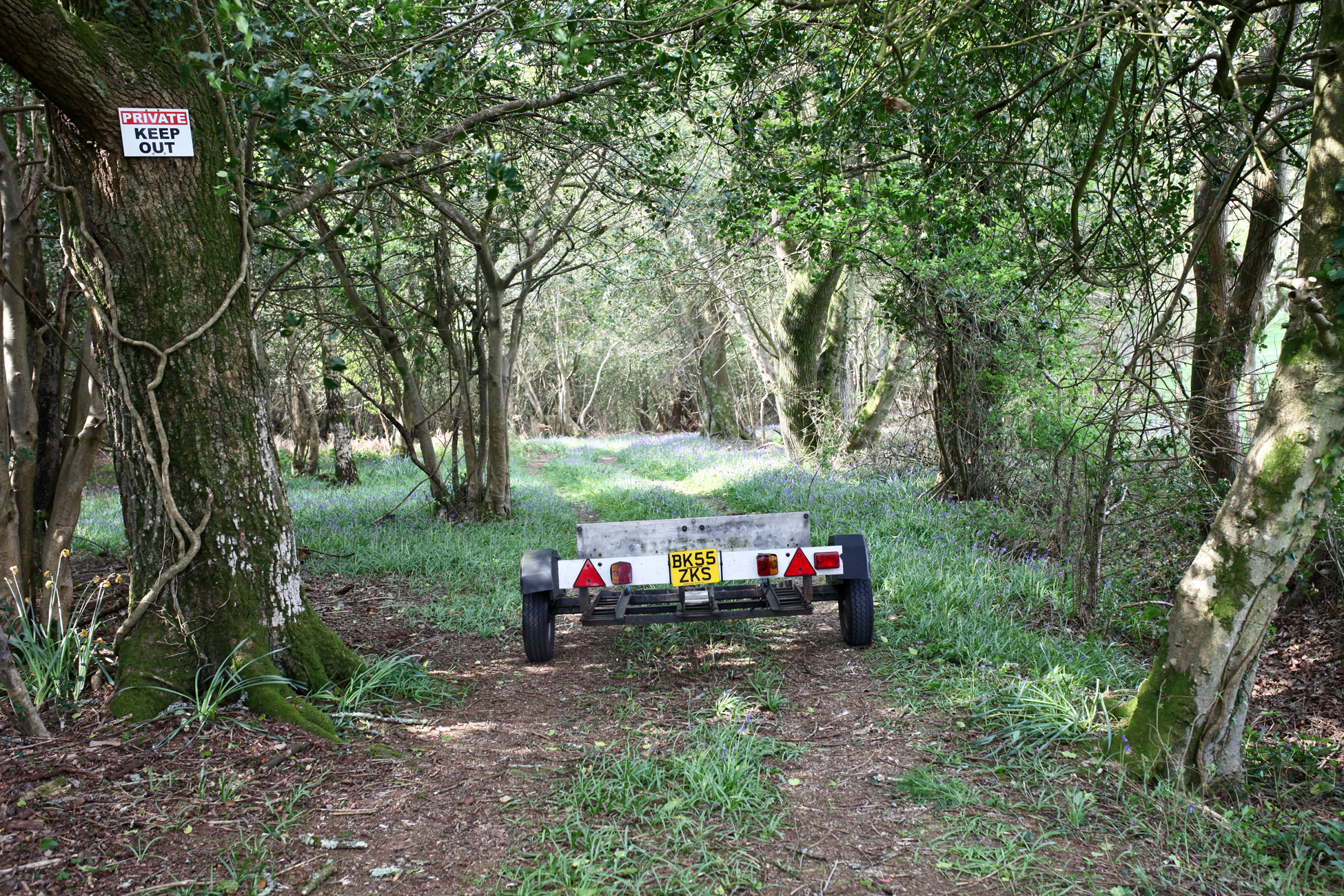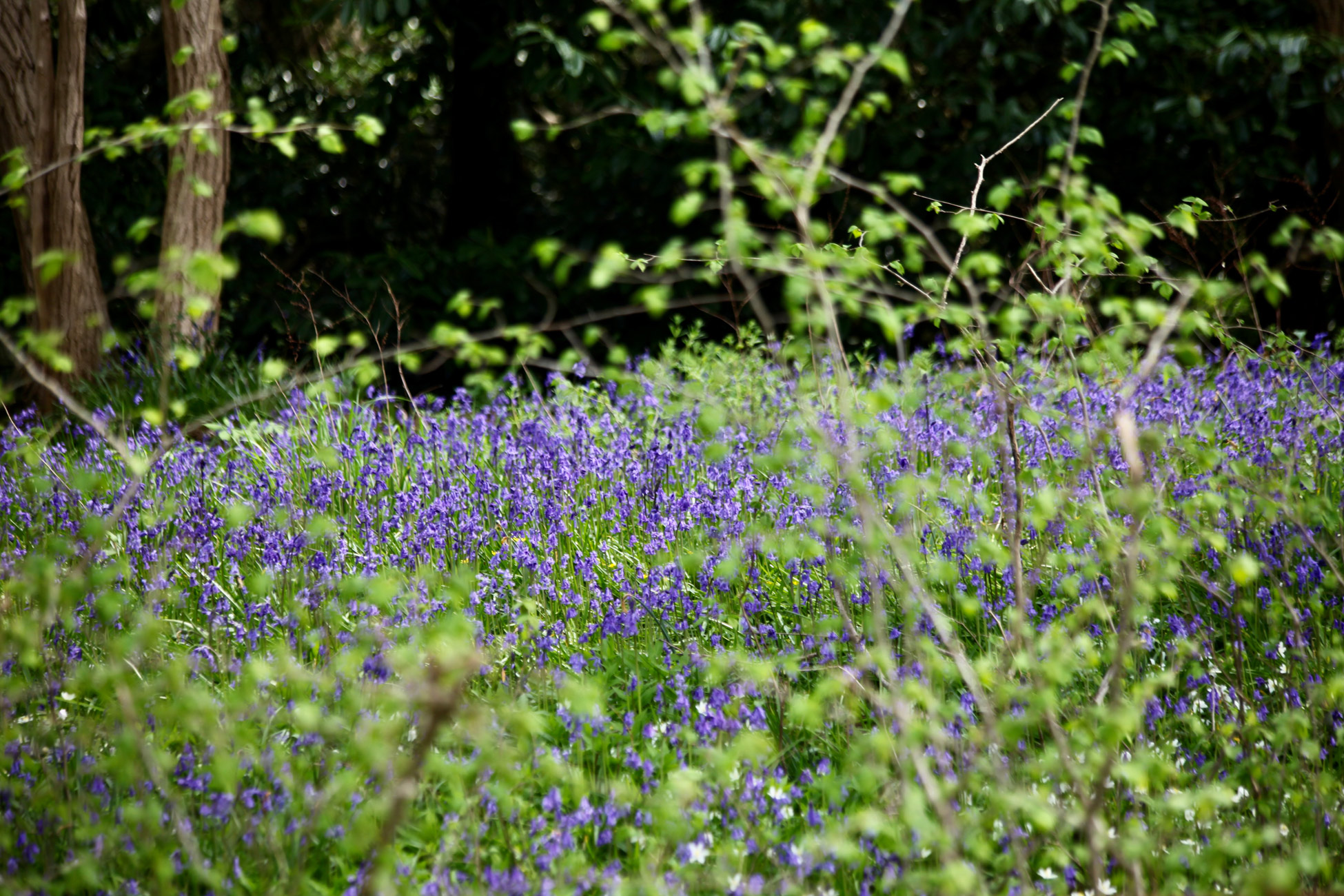This morning Jackie and I drove to our annual pilgrimage to Boldre’s



Church Lane, with its high ancient hedgerows and its




private bluebell woods.









Banks and verges are now adorned, in addition to the bluebells, with white stitchworts, and yellow celandines and dandelions.


Jackie and and I saw differing images in the gnarled bark of an aged oak.



Rodlease Lane forms a T-junction with this first ancient thoroughfare, and also hosts this native variety of the blue flowers. When taking these pictures I was careful not to disturb


a bee pollinating a dandelion.
The reason we regularly visit this little area is because it continues to be populated by our own native plants as here

photographed and described by Jackie. The long, slender stems bear dark blue bells bending down one side. The leaves are long and narrow.
The Spanish variety is an invasive plant having largely replaced our home grown examples. To illustrate the difference our Head Gardener


photographed these interlopers when we arrived home. They are larger, more upright, plants with clusters of blooms all round the stems which rise from larger strap-like leaves.

I photographed these hybrids in our front garden. Their bells do hang down, but cluster all round the top of their stems. They also have larger leaves than our natives, none of which, sadly, are to be found on our plot.
This evening I dined on spicy pasta arrabbiata while the ladies enjoyed the chilli free version with Bolognese sauce. We had planned on Louisa, Errol, Jessica, and Imogen coming for Easter, but Covid put a stop to that, so tonight we all had the same Easter pasta in the shapes of chickens, eggs, and bunnies. Jackie drank Hoegaarden and I finished the Shiraz.